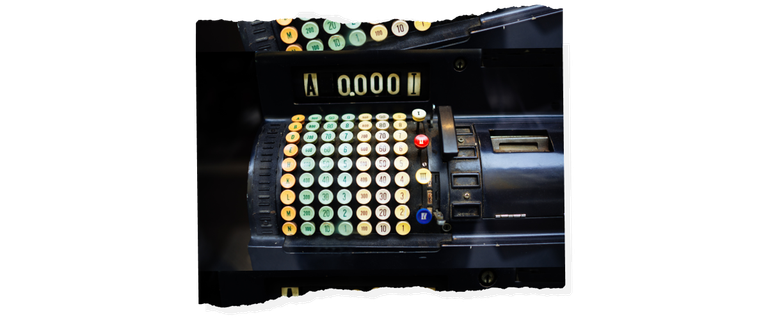Blog Article
Stellar’s Vision for an Interoperable Future
Author
Veronica Irwin
Publishing date
Interoperability
The early blockchains were built for the “maxis” (if you’re new to crypto Twitter slang, that means “maximalist”). Bitcoin was built to be the future of money: a singular, decentralized protocol to track transfers of value without a need for trust. Ethereum was built to be the future of the internet, setting a definitive standard for building on it via the ERC-20 token. Whether members of the community have ideological opposition to all other blockchains (some do, many do not), neither Bitcoin nor Ethereum have built-in support for tokenizing assets.
Stellar is different. Built between Bitcoin and Ethereum (Bitcoin in 2009, Stellar in 2014, and Ethereum in 2015), Stellar was designed with a unique goal in mind: to facilitate low-cost transfers of all forms of value, anywhere in the world. The network possesses built-in features that permit creating, sending, receiving and trading digital representations of any type of asset. This is how Stellar helps large international companies, small startups, and individual developers access new markets and helps those marginalized by the traditional financial system find financial inclusion.
This guiding principle is called “interoperability.” Stellar is built to interoperate with traditional financial institutions, different types of assets, and web and layer two blockchain applications. In other words, Stellar is a system built for moving value between all other systems.
To understand why it was built that way, you have to understand the context leading up to the early 2010s. So let’s briefly go over the history of money and the history of the internet before we get into talking about internet money.
The history of money

Before blockchains, before wire transfers, before credit cards and checks and dollar bills and coins, there wasn’t much symbolizing an exchange of value at all. Instead, actual valuables were exchanged: a feather for dye, beans for some rice, a gemstone for furs. Some historians espouse that some economies may not have even operated off this strict quid-pro-quo, leaning towards something like more of a “gift economy.”
But eventually, humans shifted towards clearer ways to record and manage value. The first coins historians know of date back to 8th century BC China, and were made of pruning implements symbolizing their value, while bronze chisels in Europe were also likely used in similar ways. Singular metals, such as gold bars in Egypt, were used as stand-ins for value by the 4th millennium BC. This enabled humans to transact with each other through an intermediary — money — rather than barter. In the centuries after, coins made of various metals became popular. These implements, be them coins or chisels, provided standardization and allowed people to pay by count.
These early stages in the evolution of money solved three problems: they standardized stores of value, provided a system for tracking the exchange of value, and allowed entities with different needs to settle with each other and have those needs met. This enables, for example, a painter to sell his wares for 10 coins, hold on to them, and then buy 10 fish priced at one coin each a few weeks later. Money makes it so he can price his artwork, sell it to anyone using that currency, hold on to that currency as a store of value, and then spend it on something else.
Value exchanges became more sophisticated with the introduction of paper money and specifically “fiat,” or government-sponsored currencies without commodity backing. Though paper money was used in China from approximately 750 to 1450 AD, bills of exchange didn’t see wide international use until the 13th century. The gold standard then became common in the 1800s among countries that engaged in international trade, but began to lose favor during WWI. The United States formally unpegged from the gold standard in 1971 to curb inflation, affirmatively delegating commodity-backed currencies as secondary to fiat in most of the rest of the world.
The international economy that exists today is thus a complex (and often tangled) web of different systems that track transfers of value. Because artificially created stores of value are not valuable in-and-of-themselves, they rely on these record keeping systems to be legitimate. This is why a given country’s currency must be exchanged for use in a different economy.
Numerous companies, organizations, banks, and government entities have formalized how value is transferred so that these systems are somewhat interoperable — but because of the wide variety of standards, settling those transactions can incur heavy fees and take days at a time. In other words: these systems kind of work together, but they’re clunky. Some of these value transfer methods include ACH, wire transfers, P2P transfer services like Zelle, Paypal and Venmo, and international payment services like Wise, WorldRemit, and Remitly.
The history of the Internet

The Internet’s history, albeit shorter than the history of money, follows a similar pattern. The internet is a network of interconnected computers, including smart homes, speakers, cell phones, and more. It was created mainly via the TCP/IP protocol, originally built in 1983.
TCP/IP wasn’t very useful for non-technical people who might want to surf the internet, but it set a technical standard. That standardization, instead, allowed for a second generation of protocols, mainly HTTP, to reach mass adoption. HTTP sets the standards for how webpages are built on the internet, and its broad release in 1991 marks the birth of the World Wide Web — what most people think of when they think of the “internet.” The FTP protocol, which enables the transfer of computer files between servers and computer networks, and SMTP, a system for transferring mail, were helpful, too. When everyone complies with their rules, users can surf the web through an array of interoperable web pages, switching from one website to another all within the same “window.”
But there’s a lot of stuff built on the internet that does not capitalize off the interoperability of the World Wide Web. Often, this interoperability is limited for business reasons: companies that create unique technology often want users and companies building tools that link to that technology to comply with the founding company’s rules. It also helps companies limit user choice, maximizing the value they can extract for themselves. WhatsApp users can’t send a message in iMessage, for example, because of different specifications set by each of the parent companies.
Interoperability is facilitated between these services via APIs. APIs allow two pieces of software to communicate with each other, and allow the company which creates them to impose its standards on other companies trying to plug into its technology. However, there are no standards for APIs themselves. That means that the API for one company’s messaging app, despite performing the exact same function, might share nothing in common with the API for a different app. In short, with each company implementing their own APIs, users of these APIs must treat each as its own unique product and project — in other words, the opposite of interoperability.
Internet x Money
Blockchain innovations can solve some of the challenges we've seen develop over time in centralized finance (inefficient systems, heavy fees) and in the centralized internet (limited user choice, lack of API standards). Stellar, as a decentralized, open blockchain network, aims to address some of the flaws of existing financial infrastructure. Whereas other blockchains, like Bitcoin, are designed to be a singular, global replacement for money, Stellar is designed to make existing and new forms of money work together. To this end, Stellar is built for interoperability.
Blockchain can create immense opportunities, but only if all of its possibilities are explored. In the blockchain industry, many people believe this means coordinating and cooperating with other chains, creating bridges, building in public, and investing in other blockchain projects. This is true, but it’s only one part of the story.
Stellar is built for easy connectivity with on/off ramps to fiat currency. That allows companies like MoneyGram International to help users convert physical cash into digital assets and back again around the world, or Finclusive to provide fintech businesses access to stablecoins in a compliant manner. These bridge companies are called “anchors,” and plug-in to Stellar to connect the network to the traditional financial system.
Stellar is also well-suited to application-level interoperability and asset interoperability. It was built so that anyone can issue their own asset on the network, recently made a lot easier with the release of the Stellar Asset Sandbox, a toolkit created for businesses experimenting with asset issuance. Application-level interoperability also involves connecting to centralized web apps by leveraging APIs, namely Horizon. With Horizon, web programs like wallets, exchanges, and asset issuers can access and query Stellar Core data, submit transactions, and stream transactions. Stellar facilitates asset interoperability, then, by tokenizing “wrapped” assets that stand-in for assets circulating on other platforms.
There are additional aspects of the Stellar ecosystem that further demonstrate the network’s unique commitment to interoperability. For one, SEPs, or Stellar Ecosystem Proposals, help create standards for building with Stellar, like HTTP did for the World Wide Web. The proposals are publicly created and shared with the community for discussion so that they can function as widely-accessible blueprints for other developers. Second, Stellar protocol changes and Core Advancement Proposals are always developed in public, while other projects are made public via open-source documents for maximum transparency. This allows developers to spot opportunities for collaboration with other blockchains, applications, assets and financial institutions, as well as root-out errors that may get in the way of that goal.
An interoperable future
The Stellar network is built to be open and accessible to as many people and financial systems as possible.
- For those with a stated interest in making their technology interoperate with the Stellar network, public documentation makes the necessary information available to build-in connectivity.
- For those who build their technology to technical specifications, there are other resources available to make building-out additional connectivity as simple as possible. These include the Anchor Platform, a toolkit for businesses to build on and off ramps to fiat, the Stellar Asset Sandbox, and the Wallet SDK.
However, smart contracts are coming to the Stellar network later this year: Soroban will change the game. While assets issued on Stellar are engineered for interoperability, developers do not have complete flexibility since the network defines its own set of operations, such as making payments with or making an offer to sell an asset. But with Soroban, a batteries-included smart contracts platform, developers will be able to fully customize asset behavior. It will also make it easier than ever to bridge to and from Stellar, because developers minting tokens can build them to their own standards while connecting to Stellar without requiring Stellar to bend its own standards either. Soroban is thus the next major step to move finance towards the interoperable future Stellar was created to achieve.
The Stellar network has always been different. Whereas most of crypto fights to the one blockchain to rule them all, the original vision for Stellar was to be the connective tissue for global payments infrastructure. That means utilizing the unique benefits of different chains and filling in the gaps with its own strengths: fast speeds, cheap transaction fees, and an efficient consensus protocol.
An interoperable financial ecosystem is the only way to avoid the pitfalls of the siloed traditional financial system of the past. That’s why Stellar focuses on the bridges, partnerships, and technical standards of the future.
The best way to contribute to this vision is to become an anchor, expanding the on/off ramps between the Stellar network and other systems. Find all the information you need to get started here.